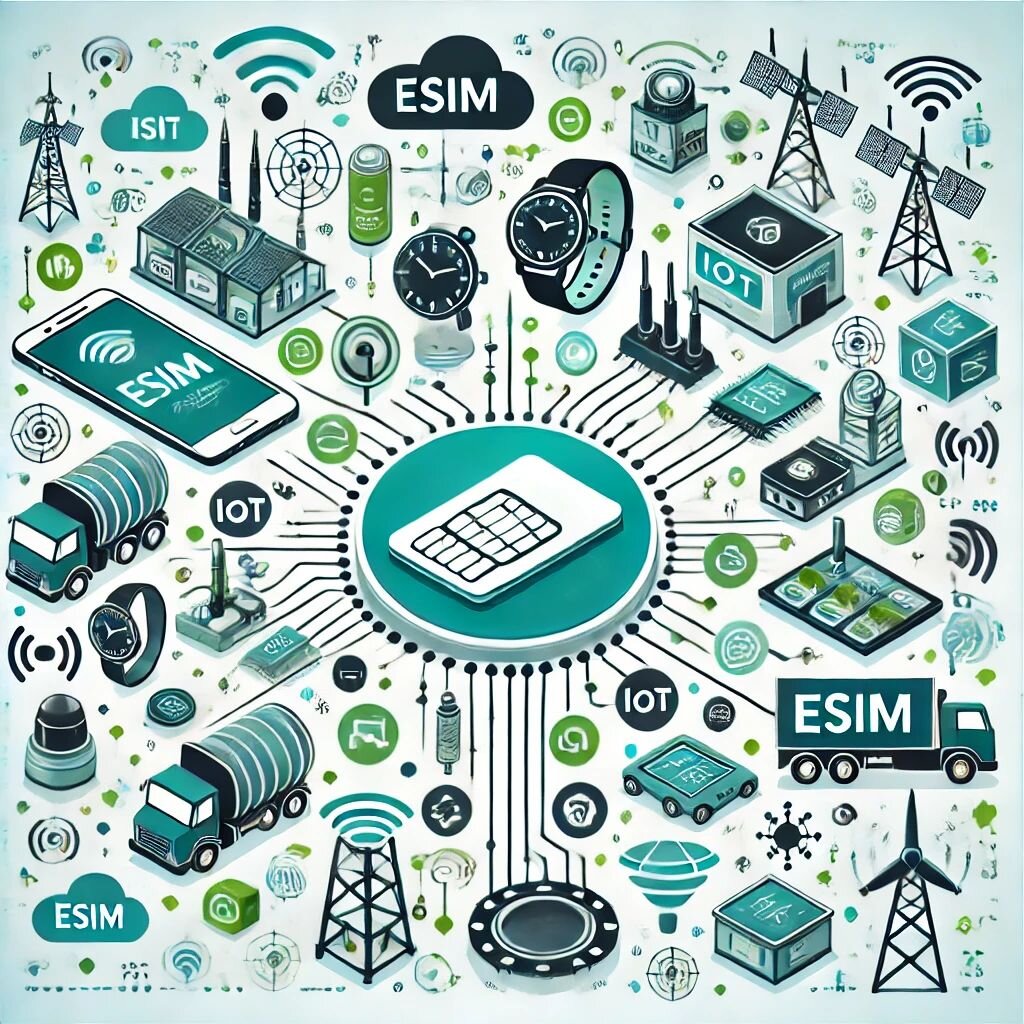Store
Local eSIMs
Regional eSIMs
Global eSIMs
Blog
Help
Supported Devices
Coupons
Partner With Us
eSIMo Team
June 2, 2025
The world of the Internet of Things (IoT) is expanding rapidly, with billions of connected devices transforming industries and everyday life. One key innovation driving this evolution is eSIM technology, which provides greater flexibility, scalability, and efficiency for IoT deployments. This article explores how eSIM technology is revolutionizing IoT, offering insights into its benefits, challenges, and diverse use cases.
An eSIM (embedded SIM) is a programmable SIM card integrated directly into a device’s hardware. Unlike traditional SIM cards, which require physical insertion, eSIMs are activated remotely through encrypted software downloads. This feature makes eSIM technology ideal for IoT environments, where physical access to devices might be limited or challenging.
In IoT applications, eSIM enables devices to connect seamlessly to multiple networks across regions without needing to swap SIM cards. This feature is essential for industries like transportation, smart cities, and consumer IoT, where devices need continuous and reliable connectivity across global networks. eSIM simplifies carrier management, enhances data security, and supports remote provisioning—perfect for large-scale IoT deployments.
Traditional SIM cards require manual swapping or provisioning, which can be time-consuming and costly for IoT devices deployed at scale. With eSIMs, organizations can manage multiple carriers and networks remotely, enabling seamless switching between providers. This enhances scalability and flexibility, making eSIM the preferred choice for IoT solutions.

eSIM enables IoT devices to operate globally by allowing them to switch between networks effortlessly. This feature is crucial for devices that travel across borders, such as connected vehicles, shipping trackers, or wearables. With eSIM, companies can deploy IoT solutions without worrying about network restrictions or roaming charges.
Managing thousands of IoT devices becomes more efficient with eSIMs. Service providers can provision, update, or deactivate eSIM profiles remotely, streamlining operations and minimizing downtime. eSIM technology supports automated device management, reducing the need for on-site interventions and enabling real-time network adjustments.
IoT devices often carry sensitive data, making security a top priority. eSIM technology offers enhanced security features, including encryption, remote locking, and tamper-proof hardware integration. This minimizes the risk of unauthorized access and strengthens IoT networks' defenses against cyber threats.
By eliminating the need for physical SIM management and reducing the complexity of carrier relationships, eSIM helps organizations cut operational costs. Automated provisioning reduces human error and streamlines network updates, enhancing overall operational efficiency.
Connected vehicles rely on uninterrupted network access for features like navigation, fleet management, and telematics. eSIM ensures global connectivity by allowing vehicles to switch networks based on their location, ensuring optimal performance and data transfer on the road.
In smart cities, IoT devices monitor traffic, utilities, public safety, and environmental conditions. eSIM simplifies network management for these devices, enabling seamless connectivity across multiple providers and networks, essential for managing large-scale urban infrastructures.
Industrial IoT (IIoT) applications require secure and reliable connections to manage operations like supply chain tracking, manufacturing automation, and predictive maintenance. eSIM technology supports these operations by ensuring always-on connectivity and secure data transfer between devices and control systems.
Wearables, smart home devices, and fitness trackers benefit from eSIM's remote activation and easy network switching. As consumer demand for connected devices grows, eSIM ensures users enjoy seamless experiences without the need for manual SIM management.
Implementing eSIM in IoT devices may encounter technical and regulatory hurdles. Not all regions have embraced eSIM technology fully, and regulations surrounding eSIM standards may vary by country, complicating global deployments.
While eSIM offers flexibility, some IoT networks may not fully support remote provisioning or multi-carrier management. Ensuring compatibility between devices, carriers, and IoT platforms is essential for successful deployment.
Although eSIM enhances security, IoT devices remain vulnerable to cyberattacks if not properly managed. Organizations must implement robust security protocols, including regular software updates, encryption, and remote monitoring, to protect their IoT networks.
eSIM technology is transforming the IoT landscape by offering greater flexibility, scalability, and security. From connected vehicles and smart cities to industrial applications and consumer devices, eSIM provides the connectivity needed to support diverse IoT solutions. While challenges such as regulatory hurdles and network compatibility remain, the benefits of eSIM far outweigh the limitations.
As the adoption of global IoT eSIM solutions increases, organizations will unlock new possibilities for growth and innovation, paving the way for a more connected future.